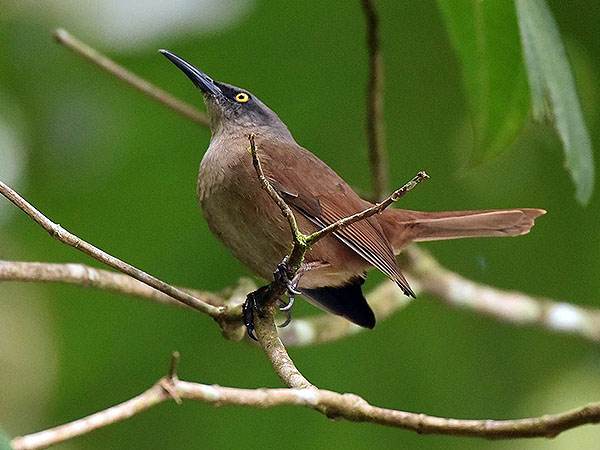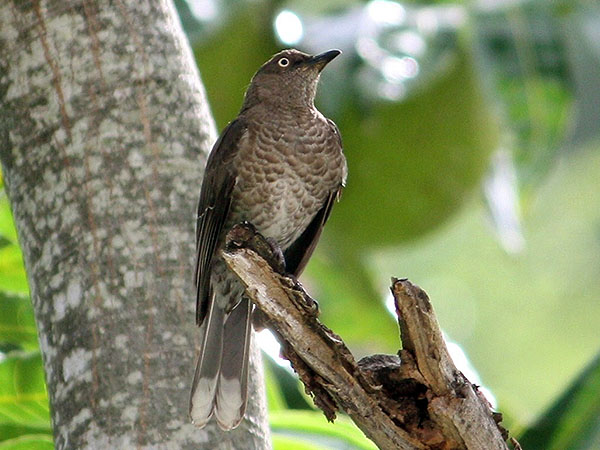Barbados Trempler (Cinclocerthia sp.)
“The next is a bird like a Thrush, of a melancholly look, her feathers never smooth, but alwayes ruffled, as if she were mewing, her head down, her shoulders up, as if her neck were broke. This bird has for three or four notes, the loudest and sweetest, that ever I heard; if she had variety, certainly no bird could go beyond her; she looks alwayes, as if she were sick or melancholly.” [1]
This account by the British author Richard Ligon from 1657 can be assigned with the utmost security to a so-called trempler (Cinclocerthia sp.), maybe a subspecies of the Grey Trempler (Cinclocerthia gutturalis(Lafresnaye)) or of the Brown Trempler (Cinclocerthia ruficauda (Gould)) both of which occur on the neighboring islands; or, given the somewhat isolated location of Barbados, may even have been an endemic species.
Whatever he case, since the island of Barbados has lost nearly all of its natural vegetation, this bird is now extinct. [2]
***
The photo below shows a Northern Brown Trempler (Cinclocerthia ruficauda ssp. tremula (Lafresnaye)) from the island of Guadeloupe.
*********************

Photo: Martingloor
http://creativecommons.org/licenses/by-sa/4.0
*********************
References:
[1] Richard Ligon: A True & Exact History Of the Island of Barbadoes: Illustrated with a map of the Island, as also the Principal Trees and Plants there, set forth in their due Proportions and Shapes, drawn out by their several and respective Scales. Together with the Ingenio that makes the Sugar, with the Plots of the several Houses, Rooms, and other places, that are used in the whole process of Sugar-making; viz. teh Grinding-room, the Boyling-room, the Filling-room, the curing-house, and Furnaces; All cut in Copper. London: printed and are to be sold by Peter Parker, at his Shop at the Leg and Star over against the Royal Exchange, and Thomas Guy at the corner Shop of Little Lumbard-street and Cornhill 1673
[2] P. A. Buckley; Edward B. Massiah; Maurice B. Hutt; Francine G. Buckley; Hazel F. Hutt: The birds of Barbados: An annotated checklist. British Ornithologists’ Union 2009
*********************
edited: 20.09.2019

